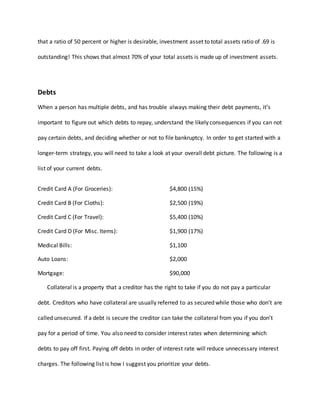This document contains a cash flow statement, net worth statement, ratios analysis, and debt summary for a couple named Brooke and Jacob Taylor. It notes their incomes, expenses, assets, liabilities, and various financial ratios. Their basic liquidity ratio is low at 0.62, suggesting insufficient emergency savings. Their asset-to-debt ratio is high at 9.62, meaning ample assets compared to debts. The document prioritizes paying down their debts from highest to lowest interest rates and discusses options for improving their financial situation like reducing expenses and saving more before making large purchases.










